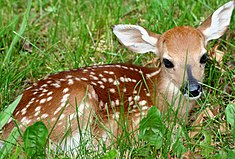Muisca cuisine
[2] The Muisca cultivated many different crops in their own regions, part of the Muisca Confederation, and obtained more exotic culinary treats through trade with neighbouring indigenous peoples, with as most important; the Lache (cotton, tobacco, tropical fruits, sea snails), Muzo (emeralds, Magdalena River fish, access to gold, spices), Achagua (coca, feathers, yopó, Llanos Basin fish, curare).
Javier Ocampo López describes the Muisca diet as predominantly vegetarian: potatoes, maize, beans, mandioca, tomatoes, calabazas, peppers and numerous fruits.
In special cases they ate llamas, alpacas, deer, capybara (chigüiro in Spanish), and fish from the rivers and lakes of the Altiplano Cundiboyacense and Magdalena and Llanos through trade.
The Muisca drank a lot of chicha, a fermented alcoholic drink of maize and sugar, served in ceramic pots called urdu or aryballus.
After the Spanish conquest, the access to meat was drastically reduced changing the diet of the Muisca and other indigenous groups of central Colombia.














